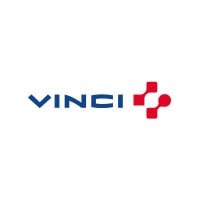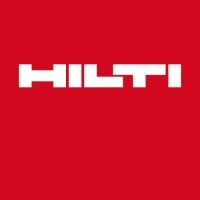Company Details
vinci
13,465
561,884
23
vinci.com
349
VIN_1669209
Completed

VINCI Company CyberSecurity Posture
vinci.comVINCI is a world leader in concessions, energy and construction, employing 280.000 people in some 120 countries. We design, finance, build and operate infrastructure and facilities that help improve daily life and mobility for all. Because we believe in all-round performance, above and beyond economic results, we are committed to operating in an environmentally and socially responsible manner. You can be part of projects that bring lasting change to urban ecosystems and entire regions. Join the team!
Company Details
vinci
13,465
561,884
23
vinci.com
349
VIN_1669209
Completed
Between 800 and 849

 VINCI Global Score (TPRM)
VINCI Global Score (TPRM)XXXX

Description: In September 2023, a ransomware attack targeted major European airports, causing severe operational disruptions as documented in NCC Group’s report. The cyberattack forced airlines to revert to **manual processes**, leading to widespread **flight delays, cancellations, and passenger congestion**. Critical systems—likely tied to check-in, baggage handling, or air traffic coordination—were compromised, paralyzing core infrastructure. The incident underscored the vulnerability of **transportation hubs** to ransomware, where even short-term outages cascade into systemic chaos. While the report does not specify data exfiltration, the **operational halt** and reputational damage align with patterns where attackers exploit high-stakes environments to maximize pressure for ransom payments. The attack’s timing coincides with Qilin’s surge in activity, a group known for targeting **supply-chain-dependent sectors**, though direct attribution to Qilin was not confirmed in this case. The disruption’s scale suggests the attackers prioritized **maximizing leverage** over data theft, leveraging the airports’ inability to function without digital systems.


No incidents recorded for VINCI in 2025.
No incidents recorded for VINCI in 2025.
No incidents recorded for VINCI in 2025.
VINCI cyber incidents detection timeline including parent company and subsidiaries

VINCI is a world leader in concessions, energy and construction, employing 280.000 people in some 120 countries. We design, finance, build and operate infrastructure and facilities that help improve daily life and mobility for all. Because we believe in all-round performance, above and beyond economic results, we are committed to operating in an environmentally and socially responsible manner. You can be part of projects that bring lasting change to urban ecosystems and entire regions. Join the team!


Hilti stands for innovation and direct customer relationships. About 34,000 employees around the world, in more than 120 countries, contribute to making our customers’ work more productive, safer and more sustainable. We do this with our hardware, software and service offering. With roughly 280,000

Turner is a North America-based, international construction services company and is a leading builder in diverse and numerous market segments. The company has earned recognition for undertaking large, complex projects, fostering innovation, embracing emerging technologies, and making a difference fo

Mesa Holding, since its founding in 1969, has embraced innovation that values people while focusing on technology with a view of trust-oriented development and in line dynamics of the era. Mesa Holding’s vision aims to sustain its existing successes while believing in approaching every new project
America's Builder is a lofty title, but it's a goal we work toward every day. D.R. Horton started in 1978 in Fort Worth, Texas, and has grown into a national Fortune 500 company. Since 2002, D.R. Horton has been the number one homebuilder in America. We build across the country, bringing our home

PCL is a group of independent construction companies that carries out work across Canada, the United States, the Caribbean, and in Australia. These diverse operations in the civil infrastructure, heavy industrial, and buildings markets are supported by a strategic presence in 31 major centers. PCL
Bechtel is a trusted engineering, construction and project management partner to industry and government. Differentiated by the quality of our people and our relentless drive to deliver the most successful outcomes, we align our capabilities to our customers’ objectives to create a lasting positive

Premier groupe français et acteur mondial de premier plan de la construction, VINCI Construction réunit plus de 830 entreprises et près de 69000 collaborateurs dans une centaine de pays. Ses expertises s’étendent à l’ensemble des métiers du bâtiment, du génie civil, et des activités spécialisées ass

With 32,500 employees working in 60 countries, Bouygues Construction designs, builds and rehabilitates the infrastructures and buildings that are essential for a sustainable society. All over the world, the teams support the development of low-carbon energy production and public transport infrastruc

KEC International Limited, the flagship company of RPG Enterprises is a diversified global infrastructure Engineering, Procurement & Construction (EPC) major, with a presence in the verticals of Power Transmission & Distribution, Railways, Civil, Urban Infrastructure, Oil & Gas Pipelines, Solar, Sma
.png)
Noventiq, a leader in digital transformation and cybersecurity solutions, announced that it has secured a significant equity investment from...
Today, Friday 12 September 2025, the General Assembly on Defence, Space and Cybersecurity was held at Esrin, the European Space Agency's Earth Observation...
OMA and VINCI Airports inaugurate new terminal and remodeled concourse at Ciudad Juárez Airport after a MX$828.4 million investment.
Cybersecurity may promise high pay and job security, but the reality often includes intense pressure, unrealistic demands, and limited...
In April 2025, messaging platform WhatsApp introduced a new feature called “advanced chat privacy”. We break down the facts.
In 2016, the Democratic National Committee (DNC) headquarter in Washington DC, was a victim of Russian hacking attacks leading to a data...
ReSpo.Vision, a Warsaw, Poland-based sports startup that provides AI-powered tracking and visualization solutions, has secured €4.2 million in funding round.
Christopher Burgess is a cybersecurity and intelligence expert, a former CIA officer awarded the Distinguished Career Intelligence Medal.
Check Point is embarking on an aggressive recruitment drive to hire 500 employees for its offices in Israel, Calcalist has learned.

Explore insights on cybersecurity incidents, risk posture, and Rankiteo's assessments.
The official website of VINCI is http://www.vinci.com.
According to Rankiteo, VINCI’s AI-generated cybersecurity score is 818, reflecting their Good security posture.
According to Rankiteo, VINCI currently holds 0 security badges, indicating that no recognized compliance certifications are currently verified for the organization.
According to Rankiteo, VINCI is not certified under SOC 2 Type 1.
According to Rankiteo, VINCI does not hold a SOC 2 Type 2 certification.
According to Rankiteo, VINCI is not listed as GDPR compliant.
According to Rankiteo, VINCI does not currently maintain PCI DSS compliance.
According to Rankiteo, VINCI is not compliant with HIPAA regulations.
According to Rankiteo,VINCI is not certified under ISO 27001, indicating the absence of a formally recognized information security management framework.
VINCI operates primarily in the Construction industry.
VINCI employs approximately 13,465 people worldwide.
VINCI presently has no subsidiaries across any sectors.
VINCI’s official LinkedIn profile has approximately 561,884 followers.
VINCI is classified under the NAICS code 23, which corresponds to Construction.
No, VINCI does not have a profile on Crunchbase.
Yes, VINCI maintains an official LinkedIn profile, which is actively utilized for branding and talent engagement, which can be accessed here: https://www.linkedin.com/company/vinci.
As of November 27, 2025, Rankiteo reports that VINCI has experienced 1 cybersecurity incidents.
VINCI has an estimated 38,722 peer or competitor companies worldwide.
Incident Types: The types of cybersecurity incidents that have occurred include Ransomware.
Detection and Response: The company detects and responds to cybersecurity incidents through an third party assistance with ncc group (reporting), third party assistance with unspecified cybersecurity firms, and recovery measures with manual operations in airports, recovery measures with public advisories, and communication strategy with ncc group report, communication strategy with media coverage, communication strategy with expert warnings (e.g., matt hull, ncc group)..
Title: Global Ransomware Surge in September 2023
Description: NCC Group's latest report found that global ransomware attacks increased sharply by 28% in September 2023, reaching 421 incidents. This surge followed a six-month decline, with the Industrials sector (29% of attacks) being the most targeted, followed by Consumer Discretionary (76 attacks) and Financial institutions (47 attacks). North America and Europe accounted for 75% of incidents. The Qilin ransomware gang was responsible for 14% of attacks, while new groups like The Gentlemen and Interlock emerged. Geopolitical tensions, including Russian military drills and Middle East conflicts, contributed to the volatile threat landscape. Critical infrastructure, such as European airports, faced significant disruptions due to manual operations and delays.
Date Detected: 2023-09-01
Date Publicly Disclosed: 2023-10-01
Type: ransomware
Attack Vector: phishingexploiting vulnerabilitiessupply chain compromisesthird-party breachescookie hijacking
Threat Actor: Qilin (14% of attacks)The Gentlemen (emerging group)Interlock (emerging group)Unspecified state-affiliated actors (geopolitical context)
Motivation: financial gainoperational disruptiongeopolitical influencestrategic hybrid warfare
Common Attack Types: The most common types of attacks the company has faced is Ransomware.
Identification of Attack Vectors: The company identifies the attack vectors used in incidents through phishingvulnerable third-party vendorssupply chain compromisesstolen credentials.

Downtime: True
Operational Impact: manual operations in airportsflight delayscancellationspassenger congestionsupply chain disruptions
Customer Complaints: True
Payment Information Risk: True
Commonly Compromised Data Types: The types of data most commonly compromised in incidents are Financial Data, Customer Data, Operational Data, Supply Chain Data and .

Entity Name: Unspecified European Airports
Entity Type: Critical Infrastructure
Industry: Transportation
Location: Europe
Customers Affected: True

Entity Name: Industrials Sector Organizations (120 attacks in September)
Entity Type: Manufacturing, Supply Chain, Industrial
Industry: Industrials
Location: North AmericaEuropeGlobal

Entity Name: Consumer Discretionary Sector (76 attacks in Q3)
Entity Type: Retail, Automotive, Leisure
Industry: Consumer Discretionary
Location: North AmericaEuropeGlobal
Customers Affected: True

Entity Name: Financial Institutions (47 attacks in Q3)
Entity Type: Banks, Investment Firms, Insurance
Industry: Financial Services
Location: North AmericaEuropeGlobal
Customers Affected: True

Third Party Assistance: Ncc Group (Reporting), Unspecified Cybersecurity Firms.
Recovery Measures: Manual operations in airportsPublic advisories
Communication Strategy: NCC Group reportMedia coverageExpert warnings (e.g., Matt Hull, NCC Group)
Third-Party Assistance: The company involves third-party assistance in incident response through NCC Group (reporting), Unspecified cybersecurity firms, .

Type of Data Compromised: Financial data, Customer data, Operational data, Supply chain data
Sensitivity of Data: High (financial, PII, operational)
Data Encryption: True

Ransomware Strain: QilinThe GentlemenInterlockUnspecified strains
Data Encryption: True
Data Exfiltration: True
Data Recovery from Ransomware: The company recovers data encrypted by ransomware through Manual operations in airports, Public advisories, .

Lessons Learned: Ransomware attacks surged after a six-month decline, indicating volatility in threat trends., Industrials and critical infrastructure remain high-priority targets due to operational disruption potential., Geopolitical tensions (e.g., Russia, China, Middle East) are increasingly tied to cyber operations, including ransomware., Emerging ransomware groups (e.g., The Gentlemen, Interlock) leverage shared infrastructure and leaked tools to scale quickly., Third-party and supply chain risks are critical attack vectors, especially during high-activity periods (e.g., Black Friday, Christmas)., AI-enabled ransomware and cookie hijacking are emerging threats exacerbated by geopolitical instability.

Recommendations: Implement robust third-party risk management to mitigate supply chain and vendor compromises., Enhance incident response plans with rapid detection and containment protocols., Adopt proactive security strategies, including threat intelligence sharing and red teaming., Prioritize critical infrastructure protection, especially in transportation and retail sectors., Monitor geopolitical developments for potential cyber threat correlations (e.g., hybrid warfare)., Prepare for seasonal spikes in attacks (e.g., holiday shopping periods) with heightened vigilance., Invest in AI-driven threat detection to counter evolving ransomware tactics.Implement robust third-party risk management to mitigate supply chain and vendor compromises., Enhance incident response plans with rapid detection and containment protocols., Adopt proactive security strategies, including threat intelligence sharing and red teaming., Prioritize critical infrastructure protection, especially in transportation and retail sectors., Monitor geopolitical developments for potential cyber threat correlations (e.g., hybrid warfare)., Prepare for seasonal spikes in attacks (e.g., holiday shopping periods) with heightened vigilance., Invest in AI-driven threat detection to counter evolving ransomware tactics.Implement robust third-party risk management to mitigate supply chain and vendor compromises., Enhance incident response plans with rapid detection and containment protocols., Adopt proactive security strategies, including threat intelligence sharing and red teaming., Prioritize critical infrastructure protection, especially in transportation and retail sectors., Monitor geopolitical developments for potential cyber threat correlations (e.g., hybrid warfare)., Prepare for seasonal spikes in attacks (e.g., holiday shopping periods) with heightened vigilance., Invest in AI-driven threat detection to counter evolving ransomware tactics.Implement robust third-party risk management to mitigate supply chain and vendor compromises., Enhance incident response plans with rapid detection and containment protocols., Adopt proactive security strategies, including threat intelligence sharing and red teaming., Prioritize critical infrastructure protection, especially in transportation and retail sectors., Monitor geopolitical developments for potential cyber threat correlations (e.g., hybrid warfare)., Prepare for seasonal spikes in attacks (e.g., holiday shopping periods) with heightened vigilance., Invest in AI-driven threat detection to counter evolving ransomware tactics.Implement robust third-party risk management to mitigate supply chain and vendor compromises., Enhance incident response plans with rapid detection and containment protocols., Adopt proactive security strategies, including threat intelligence sharing and red teaming., Prioritize critical infrastructure protection, especially in transportation and retail sectors., Monitor geopolitical developments for potential cyber threat correlations (e.g., hybrid warfare)., Prepare for seasonal spikes in attacks (e.g., holiday shopping periods) with heightened vigilance., Invest in AI-driven threat detection to counter evolving ransomware tactics.Implement robust third-party risk management to mitigate supply chain and vendor compromises., Enhance incident response plans with rapid detection and containment protocols., Adopt proactive security strategies, including threat intelligence sharing and red teaming., Prioritize critical infrastructure protection, especially in transportation and retail sectors., Monitor geopolitical developments for potential cyber threat correlations (e.g., hybrid warfare)., Prepare for seasonal spikes in attacks (e.g., holiday shopping periods) with heightened vigilance., Invest in AI-driven threat detection to counter evolving ransomware tactics.Implement robust third-party risk management to mitigate supply chain and vendor compromises., Enhance incident response plans with rapid detection and containment protocols., Adopt proactive security strategies, including threat intelligence sharing and red teaming., Prioritize critical infrastructure protection, especially in transportation and retail sectors., Monitor geopolitical developments for potential cyber threat correlations (e.g., hybrid warfare)., Prepare for seasonal spikes in attacks (e.g., holiday shopping periods) with heightened vigilance., Invest in AI-driven threat detection to counter evolving ransomware tactics.
Key Lessons Learned: The key lessons learned from past incidents are Ransomware attacks surged after a six-month decline, indicating volatility in threat trends.,Industrials and critical infrastructure remain high-priority targets due to operational disruption potential.,Geopolitical tensions (e.g., Russia, China, Middle East) are increasingly tied to cyber operations, including ransomware.,Emerging ransomware groups (e.g., The Gentlemen, Interlock) leverage shared infrastructure and leaked tools to scale quickly.,Third-party and supply chain risks are critical attack vectors, especially during high-activity periods (e.g., Black Friday, Christmas).,AI-enabled ransomware and cookie hijacking are emerging threats exacerbated by geopolitical instability.

Source: NCC Group Ransomware Report (Q3 2023)
URL: https://www.nccgroup.com/
Date Accessed: 2023-10-01

Source: Matt Hull, Head of Threat Intelligence at NCC Group
Date Accessed: 2023-10-01
Additional Resources: Stakeholders can find additional resources on cybersecurity best practices at and Source: NCC Group Ransomware Report (Q3 2023)Url: https://www.nccgroup.com/Date Accessed: 2023-10-01, and Source: Matt Hull, Head of Threat Intelligence at NCC GroupDate Accessed: 2023-10-01.

Investigation Status: Ongoing (trend analysis by NCC Group)
Communication of Investigation Status: The company communicates the status of incident investigations to stakeholders through Ncc Group Report, Media Coverage, Expert Warnings (E.G., Matt Hull and Ncc Group).

Stakeholder Advisories: Organizations Urged To Act Against Rising Ransomware Threats (Ncc Group)., Warning About Geopolitical Cyber Risks (E.G., Russian Drills, Middle East Tensions)., Advisory On Holiday-Season Attack Surges (Black Friday, Christmas)..
Customer Advisories: Potential delays and disruptions in transportation (e.g., airports) due to ransomware.Increased risk of data breaches in retail and financial sectors.
Advisories Provided: The company provides the following advisories to stakeholders and customers following an incident: were Organizations Urged To Act Against Rising Ransomware Threats (Ncc Group)., Warning About Geopolitical Cyber Risks (E.G., Russian Drills, Middle East Tensions)., Advisory On Holiday-Season Attack Surges (Black Friday, Christmas)., Potential Delays And Disruptions In Transportation (E.G., Airports) Due To Ransomware., Increased Risk Of Data Breaches In Retail And Financial Sectors. and .

Entry Point: Phishing, Vulnerable Third-Party Vendors, Supply Chain Compromises, Stolen Credentials,
High Value Targets: Industrials, Financial Institutions, Critical Infrastructure (E.G., Airports),
Data Sold on Dark Web: Industrials, Financial Institutions, Critical Infrastructure (E.G., Airports),

Root Causes: Exploitation Of Unpatched Vulnerabilities In Third-Party Systems., Lack Of Adaptive Security Measures For Emerging Threats (E.G., Ai-Enabled Ransomware)., Geopolitical Tensions Enabling State-Affiliated Or Tolerated Cyber Operations., Insufficient Segmentation Of Critical Infrastructure Networks.,
Corrective Actions: Strengthen Third-Party Vendor Security Assessments., Deploy Behavioral Analysis Tools To Detect Anomalous Activity (E.G., Ransomware Encryption Patterns)., Enhance Cross-Sector Collaboration For Threat Intelligence Sharing., Conduct Regular Red Team Exercises To Test Incident Response Readiness., Implement Zero-Trust Architectures To Limit Lateral Movement In Breaches.,
Post-Incident Analysis Process: The company's process for conducting post-incident analysis is described as Ncc Group (Reporting), Unspecified Cybersecurity Firms, .
Corrective Actions Taken: The company has taken the following corrective actions based on post-incident analysis: Strengthen Third-Party Vendor Security Assessments., Deploy Behavioral Analysis Tools To Detect Anomalous Activity (E.G., Ransomware Encryption Patterns)., Enhance Cross-Sector Collaboration For Threat Intelligence Sharing., Conduct Regular Red Team Exercises To Test Incident Response Readiness., Implement Zero-Trust Architectures To Limit Lateral Movement In Breaches., .
Last Attacking Group: The attacking group in the last incident was an Qilin (14% of attacks)The Gentlemen (emerging group)Interlock (emerging group)Unspecified state-affiliated actors (geopolitical context).
Most Recent Incident Detected: The most recent incident detected was on 2023-09-01.
Most Recent Incident Publicly Disclosed: The most recent incident publicly disclosed was on 2023-10-01.
Third-Party Assistance in Most Recent Incident: The third-party assistance involved in the most recent incident was ncc group (reporting), unspecified cybersecurity firms, .
Most Significant Lesson Learned: The most significant lesson learned from past incidents was AI-enabled ransomware and cookie hijacking are emerging threats exacerbated by geopolitical instability.
Most Significant Recommendation Implemented: The most significant recommendation implemented to improve cybersecurity was Enhance incident response plans with rapid detection and containment protocols., Monitor geopolitical developments for potential cyber threat correlations (e.g., hybrid warfare)., Prepare for seasonal spikes in attacks (e.g., holiday shopping periods) with heightened vigilance., Invest in AI-driven threat detection to counter evolving ransomware tactics., Prioritize critical infrastructure protection, especially in transportation and retail sectors., Implement robust third-party risk management to mitigate supply chain and vendor compromises., Adopt proactive security strategies and including threat intelligence sharing and red teaming..
Most Recent Source: The most recent source of information about an incident are Matt Hull, Head of Threat Intelligence at NCC Group and NCC Group Ransomware Report (Q3 2023).
Most Recent URL for Additional Resources: The most recent URL for additional resources on cybersecurity best practices is https://www.nccgroup.com/ .
Current Status of Most Recent Investigation: The current status of the most recent investigation is Ongoing (trend analysis by NCC Group).
Most Recent Stakeholder Advisory: The most recent stakeholder advisory issued was Organizations urged to act against rising ransomware threats (NCC Group)., Warning about geopolitical cyber risks (e.g., Russian drills, Middle East tensions)., Advisory on holiday-season attack surges (Black Friday, Christmas)., .
Most Recent Customer Advisory: The most recent customer advisory issued were an Potential delays and disruptions in transportation (e.g. and airports) due to ransomware.Increased risk of data breaches in retail and financial sectors.
.png)
Angular is a development platform for building mobile and desktop web applications using TypeScript/JavaScript and other languages. Prior to versions 19.2.16, 20.3.14, and 21.0.1, there is a XSRF token leakage via protocol-relative URLs in angular HTTP clients. The vulnerability is a Credential Leak by App Logic that leads to the unauthorized disclosure of the Cross-Site Request Forgery (XSRF) token to an attacker-controlled domain. Angular's HttpClient has a built-in XSRF protection mechanism that works by checking if a request URL starts with a protocol (http:// or https://) to determine if it is cross-origin. If the URL starts with protocol-relative URL (//), it is incorrectly treated as a same-origin request, and the XSRF token is automatically added to the X-XSRF-TOKEN header. This issue has been patched in versions 19.2.16, 20.3.14, and 21.0.1. A workaround for this issue involves avoiding using protocol-relative URLs (URLs starting with //) in HttpClient requests. All backend communication URLs should be hardcoded as relative paths (starting with a single /) or fully qualified, trusted absolute URLs.
Forge (also called `node-forge`) is a native implementation of Transport Layer Security in JavaScript. An Uncontrolled Recursion vulnerability in node-forge versions 1.3.1 and below enables remote, unauthenticated attackers to craft deep ASN.1 structures that trigger unbounded recursive parsing. This leads to a Denial-of-Service (DoS) via stack exhaustion when parsing untrusted DER inputs. This issue has been patched in version 1.3.2.
Forge (also called `node-forge`) is a native implementation of Transport Layer Security in JavaScript. An Integer Overflow vulnerability in node-forge versions 1.3.1 and below enables remote, unauthenticated attackers to craft ASN.1 structures containing OIDs with oversized arcs. These arcs may be decoded as smaller, trusted OIDs due to 32-bit bitwise truncation, enabling the bypass of downstream OID-based security decisions. This issue has been patched in version 1.3.2.
Suricata is a network IDS, IPS and NSM engine developed by the OISF (Open Information Security Foundation) and the Suricata community. Prior to versions 7.0.13 and 8.0.2, working with large buffers in Lua scripts can lead to a stack overflow. Users of Lua rules and output scripts may be affected when working with large buffers. This includes a rule passing a large buffer to a Lua script. This issue has been patched in versions 7.0.13 and 8.0.2. A workaround for this issue involves disabling Lua rules and output scripts, or making sure limits, such as stream.depth.reassembly and HTTP response body limits (response-body-limit), are set to less than half the stack size.
Suricata is a network IDS, IPS and NSM engine developed by the OISF (Open Information Security Foundation) and the Suricata community. In versions from 8.0.0 to before 8.0.2, a NULL dereference can occur when the entropy keyword is used in conjunction with base64_data. This issue has been patched in version 8.0.2. A workaround involves disabling rules that use entropy in conjunction with base64_data.

Get company history
















Every week, Rankiteo analyzes billions of signals to give organizations a sharper, faster view of emerging risks. With deeper, more actionable intelligence at their fingertips, security teams can outpace threat actors, respond instantly to Zero-Day attacks, and dramatically shrink their risk exposure window.
Identify exposed access points, detect misconfigured SSL certificates, and uncover vulnerabilities across the network infrastructure.
Gain visibility into the software components used within an organization to detect vulnerabilities, manage risk, and ensure supply chain security.
Monitor and manage all IT assets and their configurations to ensure accurate, real-time visibility across the company's technology environment.
Leverage real-time insights on active threats, malware campaigns, and emerging vulnerabilities to proactively defend against evolving cyberattacks.




